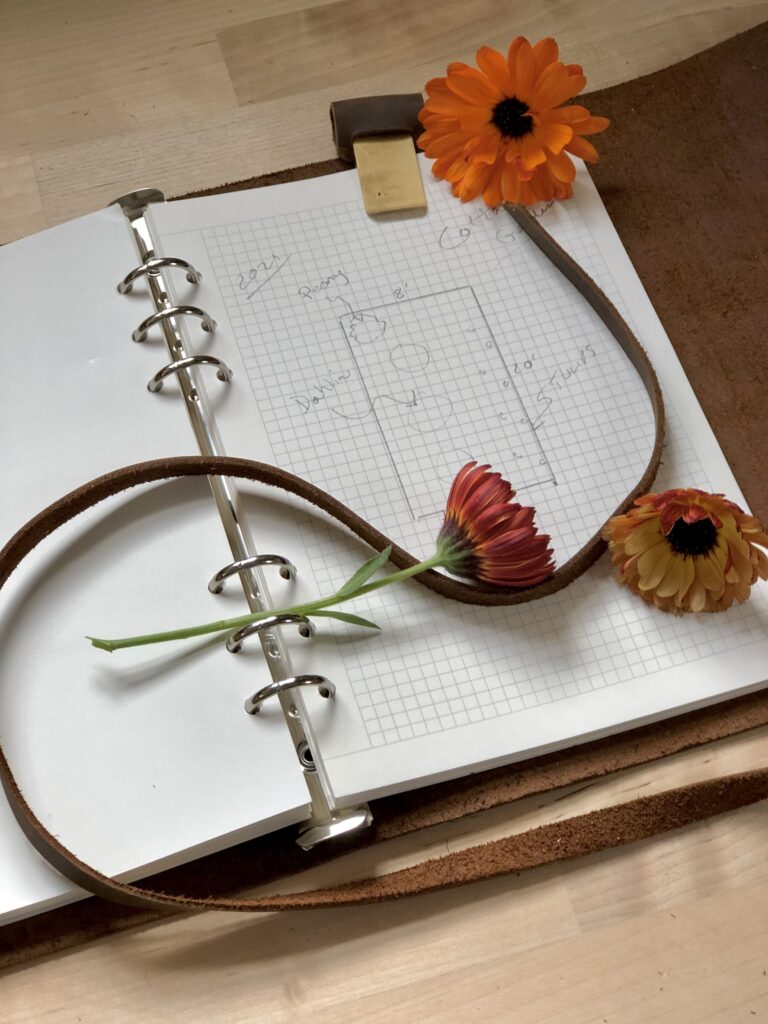Use a planting journal for success in the garden
Gardening is a journey filled with discovery, experimentation, and growth. One of the best ways to enhance this journey is by keeping a garden journal. Whether you’re a seasoned gardener or a beginner, a garden journal can become an invaluable tool for planning, tracking, and reflecting on your gardening efforts. In this post, we’ll explore why you should start a garden journal, the features of a great journal, what to include in it, and tips for being successful.
Why Journal?
Gardening, much like other scientific endeavors, benefits greatly from documentation and observation. By keeping a garden journal, you are not reinventing the wheel but rather building upon the experiences and discoveries of gardeners before you. The process of documenting your garden’s progress can be likened to the scientific method – observe, record, and reflect. Historical records show that many successful gardeners meticulously documented their practices, leading to improvements and innovations in horticulture.
A garden journal serves multiple purposes:
- Track Progress Documenting the growth of your plants helps you understand their development over time.
- Identify Patterns By noting weather conditions, pest problems, and plant health, you can identify patterns and make informed decisions.
- Plan Future Gardens Reflecting on what worked and what didn’t helps in planning future planting and improving your garden each year.
- Celebrate Successes Looking back at your achievements provides a sense of accomplishment and motivation to continue.
Features of a Great Journal
A garden journal can be as simple or as elaborate as you like. Some will be fine with a spiral notebook that you can find at any store. Others use the journal as a portal to the inner workings, both creative and practical, for their garden experience, neither is right or wrong, and both came hence the garden experience over time.Here are some key features to consider that can make your journal effective and enjoyable:
- Simplicity
- Notebook A basic notebook can be an excellent garden journal. It’s easy to carry around and jot down notes quickly.
- Don’t Overdo It like it or not, gardening is a creative endeavor. Rigid journals that place boxes around the gardener and restrict what can be entered and not entered, or have rigid templates can block the creative process. Likewise, making the journal a nightmare, versus some thing, fun and circumstance the purpose. Make it something you’d like to do exclamation
- Sections and Tabs
- Organization Dividing your journal into sections (e.g., planting dates, weather, pest control) helps keep information organized and easily accessible.
- Tabs Using tabs allows for quick navigation to different sections.
- Types of Paper
- Durability Choose paper that can withstand handling and possibly getting a bit dirty. Waterproof or tear-resistant paper is ideal for outdoor use.
- Grid or Blank Gridded paper can help with sketching garden layouts, while blank pages offer flexibility for freeform notes and drawings.
- ToDo’s and Calendars Advanced garden journals will provide calendaring, to do list and planning templates for those who want to map out their garden chores.
- Aesthetics
- Personal Touch Customize your journal with stickers, drawings, and other decorative elements to make it enjoyable to use.
- Cover Design A beautiful cover can inspire you to use the journal regularly.
- Flexibility
- Loose-Leaf A binder with loose-leaf pages allows you to add, remove, or rearrange pages as needed.
- Digital Options Digital gardening apps or software can be convenient for those who prefer typing or want to include photos and videos.
What to Journal
Here are some essential elements to include in your garden journal to ensure it’s comprehensive and useful:
- Planting Dates Record when and where you planted each type of plant.
- Weather Conditions Note daily or weekly weather conditions, including temperature, rainfall, and frost dates.
- Seed Purchases it’s always smart to identify where when and how you acquired any seeds bulbs are tubers that you plant.
- Growth Progress Track the growth stages of your plants with notes and photos.
- Pest and Disease Management Document any pest problems or diseases and the methods used to control them.
- Harvest Records Keep track of what you harvested, including quantities and dates.
- Soil and Fertilization Note soil conditions and any fertilizers or amendments used.
- Garden Layouts Draw diagrams of your garden layout each season to see what worked best.
How to Be Successful
To make the most out of your garden journal, consider these tips:
- Consistency Make it a habit to jot down notes regularly. Set a schedule that works for you, whether it’s daily, weekly, or bi-weekly.
- Details Matter The more detailed your entries, the more valuable the journal will be in the future.
- Reflect and Plan Use the journal not only to record but also to reflect on what you’ve learned and plan future gardening activities.
- Stay Organized Keep your journal organized to avoid getting overwhelmed. Use sections and tabs effectively.
- Make it Fun Personalize your journal to make it enjoyable to use. The more you like it, the more likely you are to keep up with it.
Conclusion
Starting a garden journal can greatly enhance your gardening experience by providing a structured way to document, reflect, and plan. With a few simple features and a commitment to regular entries, your journal can become a cherished tool that helps you grow as a gardener. So grab a notebook, set up your sections, and start journaling your garden adventures today!
Recent Posts

The Advantages of Built-Up Garden Beds: A Gardener’s Best Friend

The Secret Weapon for Lush Blooms: How to Create the Perfect Fertilizer Schedule

Create a Stunning Cottage Garden with These Easy-to-Grow Flowers

Fastest Growing Trees: Transform Your Landscape Quickly

What to Plant in July: A Comprehensive Guide for Gardeners












You must be logged in to post a comment.